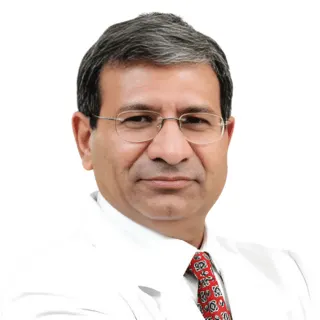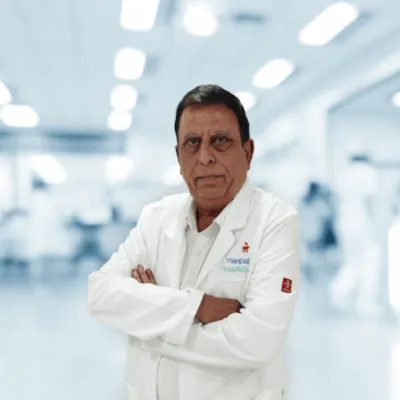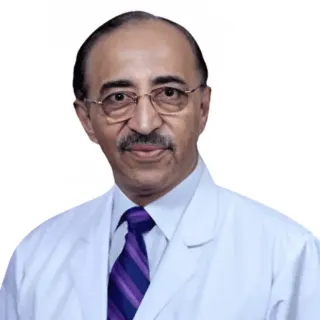Best Cardiologists in Artemis Hospital Gurgaon
 10 December,2025
Read More
10 December,2025
Read More
Starting From: USD 160 - USD 250
Hospitalization Days: 2-4 Days
Procedure Duration: 30 Min - 50 Min
Spider Vein is affordable in India. The cost of Spider Vein in India lies between USD 160 - USD 250. The exact procedure price depends on multiple factors such as the surgeon's experience, type of hospital, severity of the condition, patient's general condition,�etc.
Spider vein treatment refers to various medical and cosmetic procedures to reduce the appearance of small spider veins dilated blood vessels visible near the skin's surface. These veins often appear as red, blue, or purple clusters resembling spider webs. Treatment options include sclerotherapy, laser therapy, and vein stripping. These interventions aim to collapse or eliminate the affected veins, redirecting blood flow to healthier vessels. Spider vein treatment can improve the appearance of the skin, alleviate discomfort, and boost self-confidence. Consulting with a qualified healthcare provider can determine the most suitable treatment plan based on individual needs and preferences.
Spider vein treatment is sought for both medical and cosmetic reasons. While spider veins typically pose no serious health risks, individuals may choose treatment for the following reasons:
By addressing both cosmetic concerns and potential health risks, spider vein treatment can enhance the appearance of the skin, alleviate discomfort, and support optimal vascular function for individuals seeking to improve their vein health and overall well-being.
Spider vein treatment encompasses various techniques tailored to address individual needs and preferences. Common types of spider vein treatment include:
Patients should consult with a qualified healthcare provider to determine the most suitable spider vein treatment based on their individual condition and treatment goals.
Several factors influence the cost of spider vein treatment, including:
How Patients are Selected for the Spider Vein Treatment? What Sign They Considered?
Patients are selected for spider vein treatment based on several factors to ensure optimal outcomes and patient satisfaction. Here's how patients are typically evaluated:
By considering these factors and conducting a thorough evaluation, healthcare providers can tailor spider vein treatment plans to meet the individual needs and goals of each patient, ensuring optimal results and patient satisfaction.
Describe the Diagnostic Tests and Evaluations Performed to Determine the Need for Spider Vein Treatment
Diagnostic tests and evaluations are essential to determine the need for spider vein treatment and develop a personalized treatment plan. Here's an overview of the diagnostic process:
Spider vein treatment, whether through sclerotherapy or laser therapy, involves a balance of risks and benefits. Here's an overview of the potential outcomes associated with these treatments:
1. Improved Appearance: Spider vein treatment effectively reduces the appearance of spider veins, enhancing the aesthetic appearance of the skin and improving self-confidence.
2. Non-Invasive: Both sclerotherapy and laser therapy are minimally invasive procedures that do not require surgical incisions, resulting in minimal discomfort and downtime.
3. Customized Treatment: Treatment plans can be tailored to address the specific needs and concerns of each patient, ensuring personalized care and optimal results.
4. Quick Results: Patients typically notice a visible reduction in spider veins shortly after treatment, with continued improvement over time.
5. Minimal Downtime: Most patients can resume normal activities immediately after treatment, with minimal restrictions.
1. Temporary Side Effects: Common side effects of spider vein treatment may include bruising, swelling, redness, or itching at the treatment site. These side effects are usually temporary and subside within a few days.
2. Risk of Complications: While rare, complications such as allergic reactions, skin discoloration, or infection may occur following treatment. Choosing a qualified and experienced healthcare provider reduces the risk of complications.
3. Incomplete Resolution: In some cases, spider vein treatment may not eliminate all spider veins, requiring additional sessions for optimal results.
4. Risk of Recurrence: Spider veins may recur over time, especially in individuals predisposed to developing them. Proper post-treatment care and lifestyle modifications can help minimize the risk of recurrence.
5. Skin Sensitivity: Some patients may experience temporary skin sensitivity or changes in sensation at the treatment site, which typically resolve with time.
Overall, the benefits of spider vein treatment often outweigh the associated risks, particularly when performed by a skilled healthcare provider. Open communication with the provider about expectations and concerns helps ensure a positive treatment experience and satisfactory results.
Recovery and rehabilitation after spider vein treatment, whether through sclerotherapy or laser therapy, are generally straightforward with minimal downtime. Here's what patients can typically expect during the recovery period:
1. Immediate Post-Treatment Period: Patients may experience mild discomfort, bruising, or swelling at the treatment site immediately after the procedure. These symptoms are usually temporary and subside within a few days.
2. Compression Garments: Healthcare providers may recommend wearing compression stockings or bandages after treatment to promote circulation and reduce swelling.
3. Avoidance of Certain Activities: Patients are advised to avoid strenuous activities, hot baths, or prolonged sun exposure for a specified period following treatment to minimize the risk of complications and optimize results.
4. Follow-Up Appointments: Follow-up appointments with the healthcare provider may be scheduled to assess the treatment area, monitor progress, and determine if additional sessions are needed for optimal results.
5. Gradual Improvement: Spider veins gradually fade and improve over several weeks to months following treatment. Patients may notice a visible reduction in the appearance of spider veins as the healing process progresses.
6. Compliance with Post-Treatment Instructions: Patients are encouraged to follow post-treatment care instructions provided by their healthcare provider, including wearing compression garments as recommended and avoiding certain activities that may interfere with healing.
After undergoing spider vein treatment, patients can expect a recovery process that may involve several stages and considerations. Here's what to expect:
By following post-procedure instructions and attending follow-up appointments, patients can support their recovery process and achieve satisfactory outcomes from their spider vein treatment.
Spider vein treatment can be performed through two primary methods: sclerotherapy and laser therapy. Here's an overview of how each method is typically performed:
1. Preparation: The procedure begins with the patient lying comfortably on a treatment table. The healthcare provider cleans and sterilizes the area being treated.
2. Injection of Sclerosing Agent: A sclerosing solution, typically containing saline and a sclerosing agent like sodium tetradecyl sulfate or polidocanol, is injected directly into the affected spider veins using a fine needle.
3. Mechanical Compression: After the injection, the healthcare provider may apply gentle pressure or massage to disperse the sclerosing solution and promote its distribution within the treated veins.
4. Post-Treatment Care: Patients are usually advised to wear compression stockings or bandages after the procedure to compress the treated veins and promote optimal results.
5. Follow-Up: Follow-up appointments may be scheduled to monitor progress and determine if additional sessions are needed for the complete resolution of spider veins.
1. Preparation: Similar to sclerotherapy, the patient is positioned comfortably on a treatment table, and the area to be treated is cleaned and sterilized.
2. Application of Laser Energy: A handheld laser device is then used to deliver targeted pulses of light energy onto the spider veins. The laser energy heats and damages the blood vessel walls, causing them to collapse and eventually be absorbed by the body.
3. Cooling Measures: To minimize discomfort and protect the surrounding skin, the laser device may also incorporate cooling mechanisms.
4. Post-Treatment Care: Patients may be instructed to apply topical creams or ointments to the treated area and to avoid sun exposure for a specified period.
5. Follow-Up: Follow-up appointments allow the healthcare provider to assess treatment efficacy and determine if additional sessions are necessary.
Both sclerotherapy and laser therapy are effective treatments for spider veins, and the choice between them depends on factors such as the size and location of the spider veins, patient preference, and the healthcare provider's expertise.


Consultant
Cosmetic Surgeon
Manipal Hospital Formerly Columbia Asia, Ghaziabad

Senior Consultant
Cosmetic Surgeon
Fortis Memorial Research Institute (FMRI), Gurgaon
Doctor of Pharmacy
Dr. Deepanshu Siwach is a skilled clinical pharmacist with a Doctor of Pharmacy degree.?He has 4+?years of experience and has worked with thousands of patients. He has been associated with some of the top hospitals, such as Artemis Gurgaon.
Dr. Deepanshu Siwach is a skilled clinical pharmacist with a Doctor of Pharmacy degree.?He has 4+?years of experience and has worked with thousands of patients. He has been associated with some of the top hospitals, such as Artemis Gurgaon....
With over 23 years of experience, Dr. Vipul Nanda, an eminent Plastic and Cosmetic Surgeon, excels in surgical and non-surgical procedures, including filler, mesotherapy, laser, and dermatology....
The duration of spider vein treatment varies depending on the specific technique used and the extent of the procedure. Generally, spider vein treatments such as sclerotherapy or laser therapy can be completed within 30 minutes to an hour. However, more complex procedures or larger treatment areas may require longer sessions. Patients can discuss the expected duration with their healthcare provider.
The success rate of spider vein treatment varies depending on factors such as the specific technique used, the size and location of the spider veins, and individual patient characteristics. Generally, spider vein treatments have a high success rate, with many patients experiencing significant improvement in the appearance of spider veins. However, individual outcomes may vary, and multiple treatment sessions may be needed for optimal results.
After spider vein treatment, patients may experience mild discomfort, bruising, or swelling, which typically subside within a few days. Compression stockings may be recommended to promote healing. Patients can usually resume normal activities immediately after treatment, although strenuous exercise should be avoided for a short period.
After spider vein treatment, patients may experience mild discomfort or pain, which can typically be managed with over-the-counter pain relievers such as ibuprofen or acetaminophen. In some cases, the healthcare provider may prescribe stronger pain medication for more significant discomfort, although this is rarely necessary.
Patients can typically return to normal activities immediately after spider vein treatment, although strenuous exercise and prolonged standing or sitting should be avoided for a short period to minimize swelling and promote optimal healing. Most patients can resume regular activities within a day or two following treatment.
Physical therapy is typically not required after spider vein treatment surgery, as it is a minimally invasive procedure. Patients are usually advised to resume normal activities gradually and avoid strenuous exercise or activities that may strain the treated area. However, gentle movement and walking can promote circulation and aid in the healing process.
The duration of spider vein treatment varies depending on factors such as the size, location, and severity of the spider veins, as well as the specific treatment method used. Generally, treatment sessions for spider vein removal can last anywhere from 15 minutes to an hour, with multiple sessions often required to achieve optimal results.
Insurance coverage for spider vein treatment surgery varies depending on the individual's insurance plan and the medical necessity of the procedure. In many cases, spider vein treatment is considered a cosmetic procedure and may not be covered by insurance. However, if the procedure is deemed medically necessary due to symptoms or complications, insurance coverage may be available. It's advisable to check with your insurance provider for details.
After spider vein treatment, minimal lifestyle changes are typically necessary. Patients may be advised to avoid prolonged sitting or standing, elevate their legs when resting, and wear compression stockings as directed to promote optimal circulation and prevent recurrence. Maintaining a healthy lifestyle with regular exercise and a balanced diet can also support overall vein health and minimize the risk of future vein issues.
Yes, there are alternative treatments to spider vein treatment, including home remedies, lifestyle modifications, and cosmetic camouflage options. Home remedies such as wearing compression stockings, elevating the legs, and applying topical creams may help alleviate symptoms. Lifestyle modifications such as regular exercise, maintaining a healthy weight, and avoiding prolonged sitting or standing can also support vein health. Additionally, cosmetic camouflage products can conceal the appearance of spider veins.
Traditional spider vein treatment involves manual techniques performed by a healthcare provider, while robotic-assisted procedures utilize advanced robotic technology for enhanced precision and control. Robotic assistance may offer more precise treatment delivery, potentially leading to improved outcomes and reduced risk of complications compared to traditional methods.
After spider vein treatment, patients are encouraged to engage in gentle exercises such as walking, swimming, or cycling to promote circulation and aid in the healing process. However, strenuous exercises that put pressure on the treated area should be avoided temporarily. Patients should consult with their healthcare provider for personalized exercise recommendations based on their specific treatment and recovery needs.
The Art of Effective Communication
 10 December,2025
Read More
10 December,2025
Read More
 09 December,2025
Read More
09 December,2025
Read More
 05 December,2025
Read More
05 December,2025
Read More
 04 December,2025
Read More
04 December,2025
Read More
 27 November,2025
Read More
27 November,2025
Read More
 25 November,2025
Read More
25 November,2025
Read More